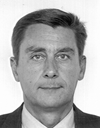 |
PATRICK FOSTER, CEO D'EXABUILDER
Oparchiv', the new archiving solution from Optrium, is based on software developed by the editor Exabuilder.
Patrick Foster, Director of Exabuilder, tells us about the solution and its key assets. Interview.
|
OPTRIUM : What is your vision of archiving?
Patrick Foster : Digital archiving requirements have grown considerably over recent years with the widespread increase in volume of data. Originally, the main objective of the archive was to organise and preserve data so as to render it accessible and usable in the long term. With increased volumes, a new need arose, that of optimising storage infrastructure costs by migrating legacy data through an archiving system. Exabuilder was developed to provide a single response to this dual requirement.
Our partner Optrium, with its understanding of archiving requirements and solutions has decided to launch this brand new product, Oparchiv’, based on Exabuilder, to make this scalable and structured archiving system available for large volumes of data.
OP : What are the specifics and strengths of Oparchiv’?
PF : The main function of Oparchiv’ is to manage the long term preservation of digital documents by organising them in a system best suited to your company, for example by project, business area or service.
When considering long term retention, Oparchiv' offers more than simple data storage for a set time, it can guarantee integrity of data and organize life cycle management; for example automated management of retention times, automatic and regular checks of the integrity of archived files, choice of the number of copies preserved on each backup...
In addition Oparchiv' focuses on ways to find the data later, as and when necessary. In fact the archives are organised in logical repositories; the user can add metadata to the archives, as you would attach a label on a file in physical archiving.
|
|
In reality this metadata ranges from a simple file name to a complete indexing of the contents of the file. Oparchiv' also incorporates a search engine so documents can be found easily.
Another advantage of this system is the simplicity of management of storage media, both in terms of scalability or integration of new technology. Adding storage capacity or migrating archives to new media can be achieved with a few clicks; this is totally transparent for the user. In addition, Oparchiv' allows the client to store part of his data in the Cloud if desired.
Finally, let me be quite clear that this solution is financially extremely competitive for the volume of data which is dealt with.
OP : Who is this product for?
PF : Oparchiv' is aimed at companies and organizations who want a simple, complete and scalable archiving product, which organises long-term data retention in a way that is as near as possible to the way in which current data is organised within the company. This can be company legacy data (technical or scientific data, images, video, etc.) or administrative data with legal value. The range of volume of data held by our clients varies from just a few teraoctets to several petaoctets.
OP : How is the system installed?
PF : The Oparchiv’ system runs on standard hardware (server, peripheral storage) and can use resources from both internal (disk/tape) and external (cloud) storage. It is extremely easy and quick to implement. A day is usually sufficient for complete product installation and for training administrators to enable them to create archive repositories, to set up storage strategies, to organise indexing and life cycle management. A user can get started in just a few minutes. |







